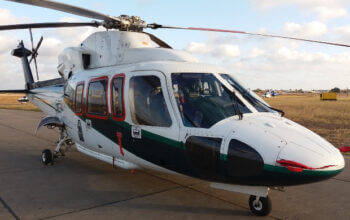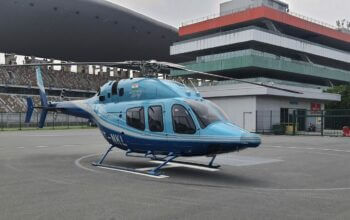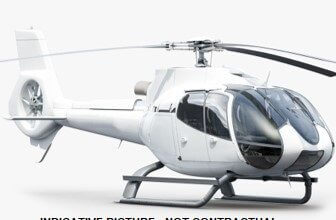Estimated reading time 6 minutes, 17 seconds.
JETNET LLC, the leading provider of corporate aviation information, has released December 2015 and 2015 year-end results for the pre-owned business jet, business turboprop, helicopter, and commercial airliner markets.
Most market sectors are showing higher inventory for sale, with fewer full-sale transactions in 2015 compared to 2014.
The fleet for sale percentages for all market sectors, except for piston helicopters and commercial airliner jets, were higher in the December comparisons, with commercial and business turboprops up the most (1.2 percentage points and .7 percentage point, respectively).
Across all market sectors, JETNET is reporting 8,296 full retail sale transactions for 2015. Last year, this number was 8,544, a decrease of 248 or 2.9 per cent fewer transactions.
Business jets were almost 2,500 transactions in 2015, and when combined with commercial airliners at 1,807 transactions, they accounted for 51 per cent of the total of 8,296 transactions recorded in 2015.
Business jets are taking less time to sell (44 days) than last year. However, there was an 11.6 percent increase in average asking price, with a 4.3 per cent decrease in retail sale transactions.
Also, business turboprops decreased 5.9 per cent in retail sale transactions, with an increase in asking price of three per cent. Further analysis of the asking price increase has revealed that, on average, newer aircraft were sold in 2015 vs. 2014.
Several significant events have occurred since 2005 in the business jet “for sale” inventory.
First, the past 10 years have been characterized as a buyer’s market, with the fleet percentage for sale consistently exceeding 10 per cent.
Second, after several years of record sales and rising aircraft values, the bubble finally burst in 2008 amid a world economic collapse and banking crisis of historic proportion. Compared to 2007, the for sale inventory of business jets in 2008 climbed by 973 units—an increase of 60 percent—and then again in 2009 by 1,147 units—an increase of 70 per cent. This large increase peaked in 2009.
Third, a decline in year-end for sale inventory began in 2010, and has remained relatively steady to date. In that time, the percentage of the fleet for sale declined from nearly 18 per cent to about 11.5 per cent at the close of 2015. The 2015-inventory level is still above the 2,000 mark, and increased compared to 2014.
However, it should be noted that this percentage decline is not entirely due to a reduction in inventory for sale. Also at play is a growing in-operation fleet—by way of new business jet deliveries in the range of 600-700 units per year since 2010—while retirements have only been in the vicinity of 200 airframes a year.
So the in-operation fleet size has grown at a pace faster than that of the reduction in inventory for sale.
In 2015, full retail sale transactions dropped to 2,458, or -4.3 per cent, ending six consecutive years of increases. This is perhaps a sign that the pre-owned market is changing direction, with higher inventories for sale and fewer sales.
The drop is 111 fewer business jets compared to 2014. As noted previously, all market sectors showed fewer full retail sale transactions in 2015 compared to 2014, except for piston helicopters.
There was a mixed result in weight classes that totaled -111, or -4.3 per cent, fewer business jet transactions in 2015 compared to 2014. The Heavy weight class led with 43 (5.6 per cent) more transactions, followed by the lightweight class, showing the largest decline at -111 (-11.5 per cent) in 2015 compared to 2014.
Also, the lightweight class had the largest number of transactions in 2015—858, or 35 per cent of the total of 2,458.
U.S. economy gross domestic product, fourth quarter 2015 (third estimate)
Real gross domestic product (GDP)—the output of goods and services produced by labor and property located in the United States—increased at an annual rate of 0.7 percent in the fourth quarter of 2015 (that is, from the third quarter to the fourth quarter), according to the “advance” estimate released by the U.S. Bureau of Economic Analysis (BEA).
This advance estimate is the first of three GDP reports that BEA will issue for the fourth quarter. In the third quarter, real GDP increased two per cent.
The economic growth as measured by domestic GDP is less than half that of the July to September period. This was the worst showing since last year’s severe winter storms slowed the United States economy.
However, most economists are expecting United States GDP growth of between 2.5 percent and three per cent in 2016. Weakening exports, combined with a stronger U.S. dollar, have contributed to making United States aircraft pricier and therefore less competitive overseas.
The persistent sluggishness in key export markets such as China and Europe hurt as well. Accordingly, the three per cent growth that is needed for business aviation to do well may not be on the horizon in 2016.
Since 1988, JETNET has delivered the most comprehensive and reliable business aircraft research to its exclusive clientele of aviation professionals worldwide. JETNET is the ultimate source for information and intelligence on the worldwide business, commercial, and helicopter aircraft fleet and marketplace, comprised of some 100,000 airframes.
Notice a spelling mistake or typo?
Click on the button below to send an email to our team and we will get to it as soon as possible.
Report an error or typoHave a story idea you would like to suggest?
Click on the button below to send an email to our team and we will get to it as soon as possible.
Suggest a story







